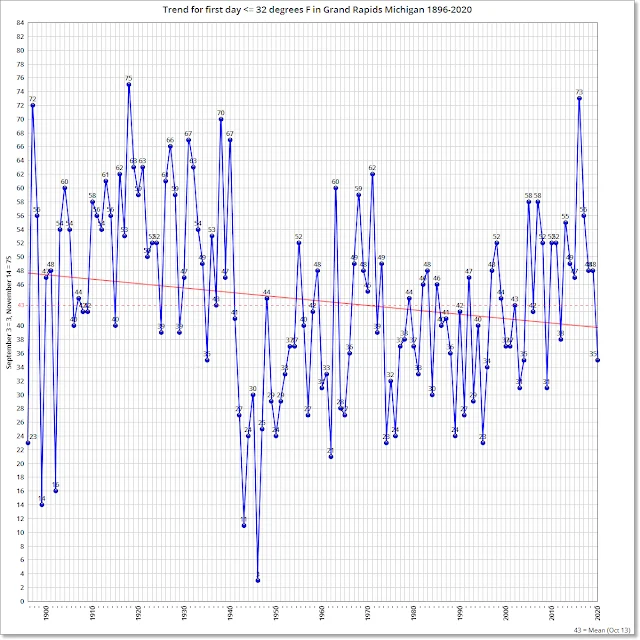The passing scene is hilarious, until it careens through the front yard and crashes into my living room.
Friday, March 12, 2021
Climate Update for KGRR: February 2021
Climate Update for KGRR: February 2021
Thursday, March 11, 2021
Death toll after COVID vaccines climbs to 1,637, CDC denies link
Wednesday, March 10, 2021
Examples of US States back-filling death data from COVID-19 in recent days
Friday, March 5, 2021
The list of adverse reactions to Pfizer's COVID vaccine in the US makes for interesting reading
Some reactions to Pfizer's COVID vaccine reported to US VAERS for 14,649 events through 2/26:
Blindness: 20
Blurry vision: 122
Chest pain: 361
Chest discomfort: 485
Cardiac arrest: 70
Thrombosis/stroke: 30
Spontaneous abortion: 30
Facial paralysis: 199
Death: 475
Sense losses: touch (671), smell (129), taste (134)
Swelling: lymphatic (362), lips (182), throat (160), face (203), tongue (181), peripheral (206)
Severe itching: 787
Rash: 781
Hives/urticaria: 572
Tingling sensations: 873
Oral tingling: 418
Joint pain: 760
Tight throat: 315
Anaphylactic reaction: 143
Fever: 2,018
https://vaers.hhs.gov/data.html
Full-time employment in the US in February 2021 continues to SUCK
47.5% of the civilian US non-institutional population had full-time jobs in February 2021. The average level in 2020 was 47.3%.
Missing full-time in February relative to the 2019 average of 50.4% is 7.5 million.
Relative to the all-time high in 2000 at 53.6%, missing full-time is a whopping 15.87 million.
Thursday, March 4, 2021
Monday, March 1, 2021
US COVID-19 update through Feb 2021
Daily new cases have dropped dramatically in February 2021, but still average 85,863 per day and remain higher than for any month before last November when the country was still in a fit of hysteria about the pandemic.
Daily new deaths had their third worst month in February 2021 and are still higher than in April last.
Hospitalizations have dropped dramatically in February to 48,871 on Saturday 2/27. Peak Saturday level was January 9th at 130,781. The Saturday peak last summer occurred on 7/25 with 59,301 hospitalized. The Saturday peak last April occurred on 4/18 with 57,761 hospitalized.
The Covid Tracking Project at The Atlantic will unaccountably stop collecting such data on March 7th. I say unaccountably because the absolute low in Saturday hospitalizations after the April outbreak was 27,967 on June 20th and the October lows never matched that. We're not even close to those levels yet. It's WAY too early to conclude that data collection should cease when the previous lows haven't yet been taken out.
Meanwhile, the hospitalization data collected by the University of Minnesota continues to show the second wave still in decline at the end of February. The worst states (NY in gray, CA in blue, TX in pink, and FL in green) for hospitalizations are shown in the graphs. The declines are welcome, but levels remain elevated.
Daily new case data in a number of countries, e.g. Brazil, Finland, Hungary, Czechia, France, Italy, Poland, Ukraine, Sweden, in recent weeks has turned upward to one degree or another. This could be a harbinger of a coming seasonal surge.
Meanwhile about 7.5% of the US is fully vaccinated, and 15% partially vaccinated.
It remains to be seen how effective the vaccines will be against mutations, and how durable the vaccines will be over time.
















